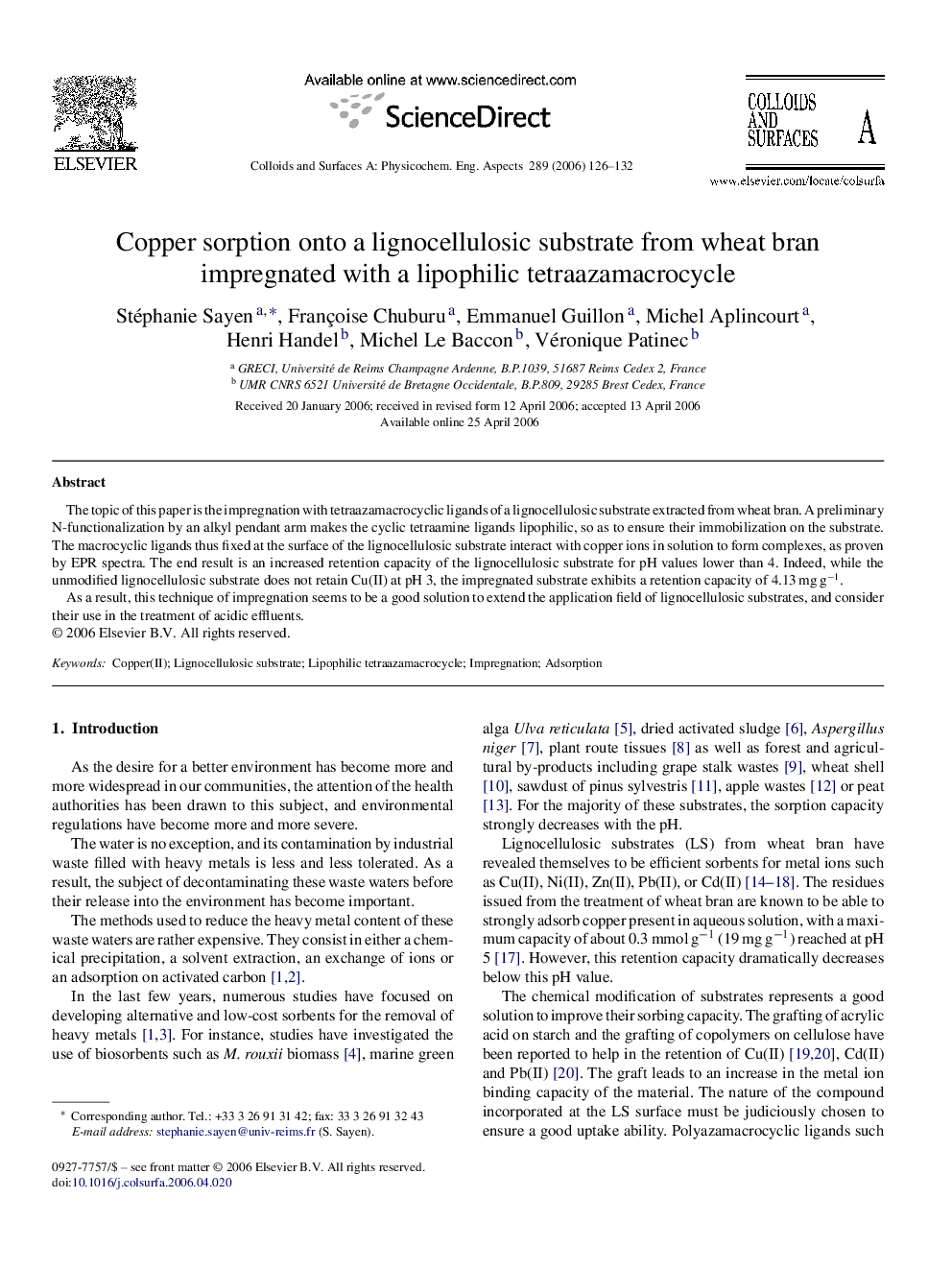| Article ID | Journal | Published Year | Pages | File Type |
|---|---|---|---|---|
| 598140 | Colloids and Surfaces A: Physicochemical and Engineering Aspects | 2006 | 7 Pages |
The topic of this paper is the impregnation with tetraazamacrocyclic ligands of a lignocellulosic substrate extracted from wheat bran. A preliminary N-functionalization by an alkyl pendant arm makes the cyclic tetraamine ligands lipophilic, so as to ensure their immobilization on the substrate. The macrocyclic ligands thus fixed at the surface of the lignocellulosic substrate interact with copper ions in solution to form complexes, as proven by EPR spectra. The end result is an increased retention capacity of the lignocellulosic substrate for pH values lower than 4. Indeed, while the unmodified lignocellulosic substrate does not retain Cu(II) at pH 3, the impregnated substrate exhibits a retention capacity of 4.13 mg g−1.As a result, this technique of impregnation seems to be a good solution to extend the application field of lignocellulosic substrates, and consider their use in the treatment of acidic effluents.
